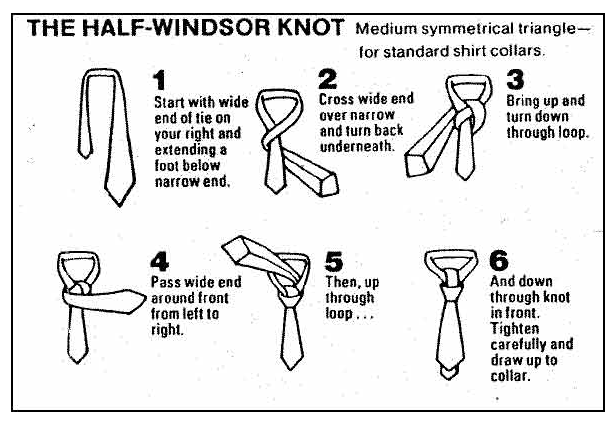
With permission from http://www.tiefighter.net
This week we were asked to locate an example of universal design that addresses a performance issue in an instructional context and that relates to visual literacy. A performance graphic helps people perform a task and it not necessarily designed to be memorable.
Universal design is “the design of products and environments to be usable by all people, to the greatest extent possible, without the need for adaptation or specialized design” (http://universaldesign.ie/What-is-Universal-Design/). This definition can be adapted to educational settings and products such that they can be used by all students.(Burgstahler, 2005)
The graphic above is visual because the ties provide visual cues of how to tie a half-Windsor knot. The design meets several of the 7 principles of universal design. It is flexible enough to be used by a wide variety of people except for those who are blind. It is simple and intuitive. Necessary information is included and communicated effectively. The visual cue of the ties allows communication that cuts across language barriers. Those who find the tie diagrams confusing or just prefer words can read the descriptions of each step.
Reference:
Burgstahler, S. Universal Design of Instruction (UDI): Definition, Principles, Guidelines, and Examples. Retrieved from: www.smith.edu/deanoffaculty/Burgstahler.pdf